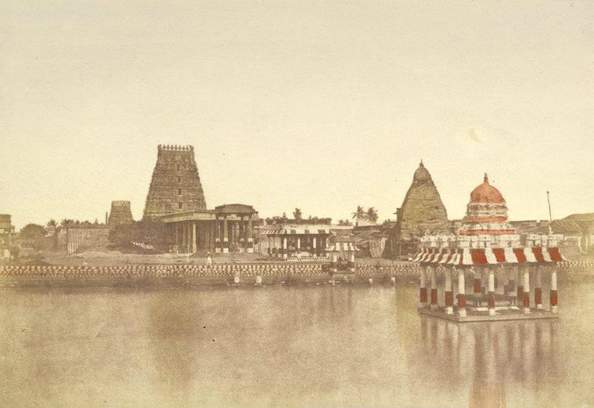This is a six part article detailing the Artha Panchaka – The Five Requirements of a Srivaishnava based on The Handbook of Srivaishnavism by U Ve Sri Rama Ramanuja Achari of Sri Matham
The Starting Point – The Human Condition
All beings are striving for the maximum amount of happiness and trying to avoid suffering. But eventually the realisation dawns, that however hard one may strive for material happiness there is always something missing, a feeling of emptiness, dissatisfaction and unease. Everything is in a constant state of change; pleasure alternating with sorrow, hope alternating with disappointment, meetings ending in partings and permanent peace and happiness are always elusive. The greatest crisis that those living in a modern world experience is the lack of meaning in life. In the third world struggling for existence is meaning enough. In a situation where physical needs are taken care of more complex forms of happiness and more subtle forms of meaning are sought. In the affluent west, “Consumerism” is the great provider of meaning and pleasure. Having things, and being something, provide some temporary
meaning and satisfaction to millions! of bored middle class yuppies all over the world. The low level sense of anxiety and inner emptiness which is part of the un-enlightened human condition is one of the main forces that the advertising industry uses to manipulate us so skilfully. So we purchase an endless series of products and services all intended to give us some sense of fullness and value and meaning to life. Modern life takes on a normative form of low-level anxiety and quite desperation.
According to Vedanta Desikan, all forms of material pleasure and happiness and all material goals have seven defects known as Sapta-dosha these are:-
1. alpa – their end results are trivial
2. asthira – they are transient and impermanent,
3. asukara – not easily obtained, they require much effort and are time consuming.
4. asukhavasana – ultimately ending in grief and disappointments.
5. dukhanvita – accompanied by disappointments and supported only by struggle.
6. anucitam – incompatible with our essential being.
7. abhimana-mula – they’re based upon a false sense of self and lead to further perpetuation of this delusive sense of identity.
To give true and ultimate meaning to life is the function of Dharma of the Spiritual Life. The decision to investigate the spiritual option usually comes from the realisation of the unsatisfactory nature of human existence with all its shortcomings, and the apparent meaninglessness of a life of vegetating and consumerism. When one becomes disenchanted with life as one lives it, questions begin to arise in the mind, due to previous merit and the Grace of God. Questions about who we are, what is the purpose of life and how do we achieve permanent happiness. Earnestly seeking the answer to these questions leads to introspection and the examination of one’s real nature, one’s position in society and in the universe.
Eventually one attains the realisation that life is predominantly characterised by three states; suffering (duhkha) and confusion (bhrama) both of which are based upon spiritual ignorance (ajñanam)! 0 One then begins the Spiritual Quest – a journey in search of enlightenment and the Supreme Happiness or Beatitude.
Physical suffering manifests in six forms known as the shat-kleshas:-
1. The process of birth
2. Transformation and change
3. Sickness and physical infirmity
4. Hunger and thirst.
5. Old age
6. The process of dying.
Mental suffering arising from confusion and ignorance manifests itself in five ways:-
1. Identity crisis.
2. Confusion about the purpose of life.
3. Frustration in achieving one’s goals and the craving for permanence.
4. Rejection of, or questioning the existence of God.
5. Despairing of life and desiring to end it all.
The knowledge which dispels these five manifestations of ignorance are formulated in the operative model or paradigm known as the artha panchaka which means the “Five Required Things” or the Five matters which need to be investigated. This paradigm is the basis for the methodology of Spiritual development, the achievement of abiding happiness and the structure of the Srivaishnava belief system.
Artha Panchaka — The Five Requirements
There are the five categories of spiritual knowledge which one needs to study, reflect upon, realise and practice in order to progress spiritually. These are:-
1. The nature of the Godhead. para-svarupam
2. The nature of the Self. sva-svarupam
3. The nature of life’s goal. purushartha svarupam
4. The means to attain that goal. upaya svarupam
5. The obstacles on the spiritual path virodhi svarupam
to be continued…










Dhanyosmi swami.
I have some basic questions. If you can point me to references where I can get clarifications for these, I will be ever grateful.
of the Shat Kleshas –
1. No one has memory of their birth. It is a pain to the mother, no doubt. But only the conciousness makes it so. The birth of a plant from the soil is also very painful. BUT for the child which is planting the seed and watching it grow, it is the most exciting thing in the world. How is this classified unilaterally into the pain category?
2. In my understanding the rest all all consequences of #1. If we take these as reasons for spiritual exploration, we don’t see any of those who went through the process alive – undying, without old age today. Lets not tell that they are alive in spirit. I agree that it could be. If that is the case, we should not treat these as fundamental reasons for spiritual exploration.
I would like to understand this from Vedanta Desikan’s perspective. Can you kindly point me to any explanations / Bhashyas which provide answers to my confusions?
Adiyaen
Ramadasan